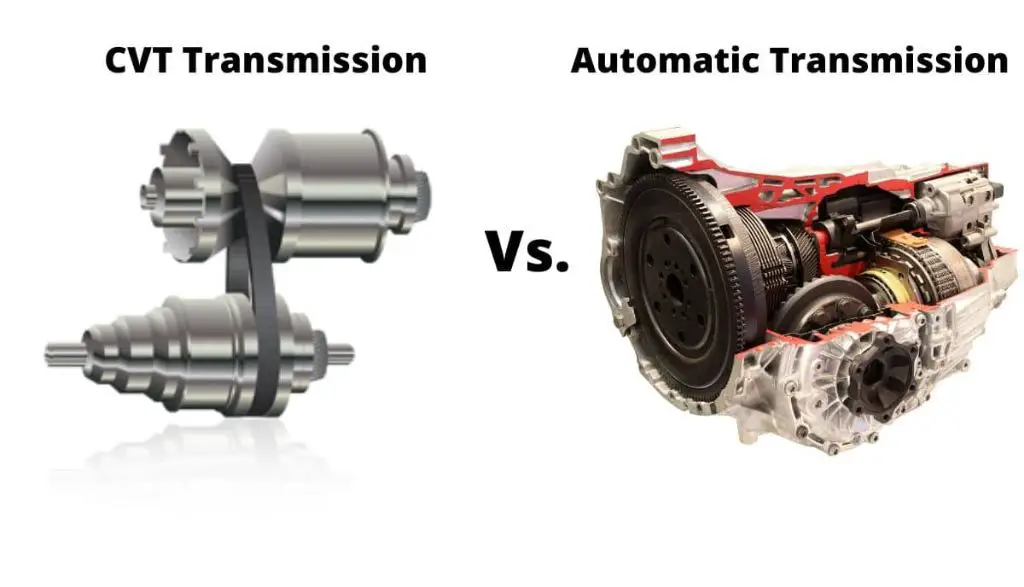Continuously Variable Transmission (CVT) and hydrostatic transmission are two different types of automatic transmissions used in vehicles. They both aim to provide smooth and seamless shifting but use different mechanisms to achieve this. Understanding the working, pros and cons of each can help determine which one is better suited for specific applications.
Page Contents
How does a CVT transmission work?
A CVT or continuously variable transmission uses a belt and pulley system to provide an unlimited range of gear ratios. It consists of two pulleys connected by a metal belt. One pulley is connected to the engine while the other is connected to the drive wheels.
The pulleys can alter their width to change the diameter of the belt path. This seamlessly varies the gear ratio across a continuous range. By increasing pulley diameter on one side and decreasing it on the other, seamless acceleration can be achieved without discrete gear shifts. This allows the engine to remain in its optimal power range while gear ratios change.
Key Components of a CVT
- Drive pulley – Connected to the engine
- Driven pulley – Connected to the drive wheels
- Metal belt – Transfers power between pulleys
- Hydraulic system – Alters pulley widths to change gear ratios
How does a hydrostatic transmission work?
A hydrostatic transmission uses hydraulic fluid to transfer power from the engine to the drive wheels. It consists of a variable displacement hydraulic pump connected to the engine. This pump transfers hydraulic fluid to a hydraulic motor connected to the wheels.
By altering the displacement of the pump, the hydraulic pressure and flow rate can be varied. This seamlessly changes the ratio of engine speed vs wheel speed. Planetary gearsets may be added to provide some discrete ratios for highway cruising.
Key Components of a Hydrostatic Transmission
- Hydraulic pump – Connected to engine
- Hydraulic motor – Connected to drive wheels
- Hydraulic fluid – Transfers power
- Electronic controls – Vary pump displacement
Pros of CVT
- Smooth acceleration: CVT provides infinite gear ratios for smooth, uninterrupted acceleration.
- Improved fuel efficiency: Keeps engine RPM in optimal range for better fuel efficiency.
- No power interruption: Power delivery is continuous with no pauses between gear shifts.
- Adaptive shifting: Gear ratios change adaptively based on driving conditions.
- Less complex design: Simpler and more compact compared to traditional automatic transmissions.
Cons of CVT
- Low torque handling: Not ideal for high torque applications due to friction limits of belt.
- Durability issues: Long term durability of belt and pulleys is a concern.
- Less control: Lack of discrete gears gives less driver control compared to traditional automatics.
- Annoying engine noise: Tendency to hold engine RPM high can cause annoying noises.
Pros of Hydrostatic Transmission
- High torque handling: Can handle high torque from engine due to hydraulic power transfer.
- Smooth operation: Provides smooth acceleration and deceleration.
- Compact design: All components are contained in one housing.
- Proven durability: Hydraulic systems are well proven to be durable.
- Low maintenance: Sealed hydraulic circuit requires little maintenance.
Cons of Hydrostatic Transmission
- Complex design: More complex and expensive than CVT.
- Efficiency losses: Hydraulic fluid coupling causes some loss of efficiency.
- Overheating issues: Inefficient operation can overheat hydraulic fluid.
- Noise: Can be noisy, especially at high pressures.
- Heavy: Weight is higher than a comparable CVT.
Comparison of CVT and Hydrostatic Transmission
| Parameter | CVT | Hydrostatic Transmission |
|---|---|---|
| Torque handling | Lower torque capacity due to belt limits | Higher torque capacity from hydraulic transfer |
| Efficiency | Good efficiency from optimal RPM range | Some losses from hydraulic coupling |
| Smoothness | Infinite ratios provide very smooth operation | Smooth but some steps between ratios |
| Complexity | Relatively simple design | More complex hydraulic circuitry |
| Size and Weight | Compact and light | Larger components make it heavier |
| Cost | Lower cost compared to traditional automatics | More expensive due to complex hydraulics |
Applications of CVT and Hydrostatic Transmissions
Here are some typical applications where CVT and hydrostatic transmissions are commonly used:
CVT Applications
- Smaller passenger cars
- Scooters and motorcycles
- Small tractors and utility vehicles
- Go karts and buggies
- Light commercial vehicles
Hydrostatic Transmission Applications
- Heavy duty trucks and buses
- Large tractors and agriculture equipment
- Construction equipment
- Military vehicles
- Forestry equipment
Conclusion
In summary, CVT and hydrostatic transmissions both offer smooth and stepless gear shifting. CVT is more suited for small passenger cars and light duty applications due to its simplicity, light weight and low cost. Hydrostatic transmissions are better for high torque heavy-duty applications but are more complex and expensive.
For most small passenger cars and motorcycles, a CVT often provides the best balance of smoothness, performance, fuel efficiency and cost-effectiveness. But for larger vehicles requiring high torque capacity and durability, hydrostatic transmissions are usually the preferred choice.
